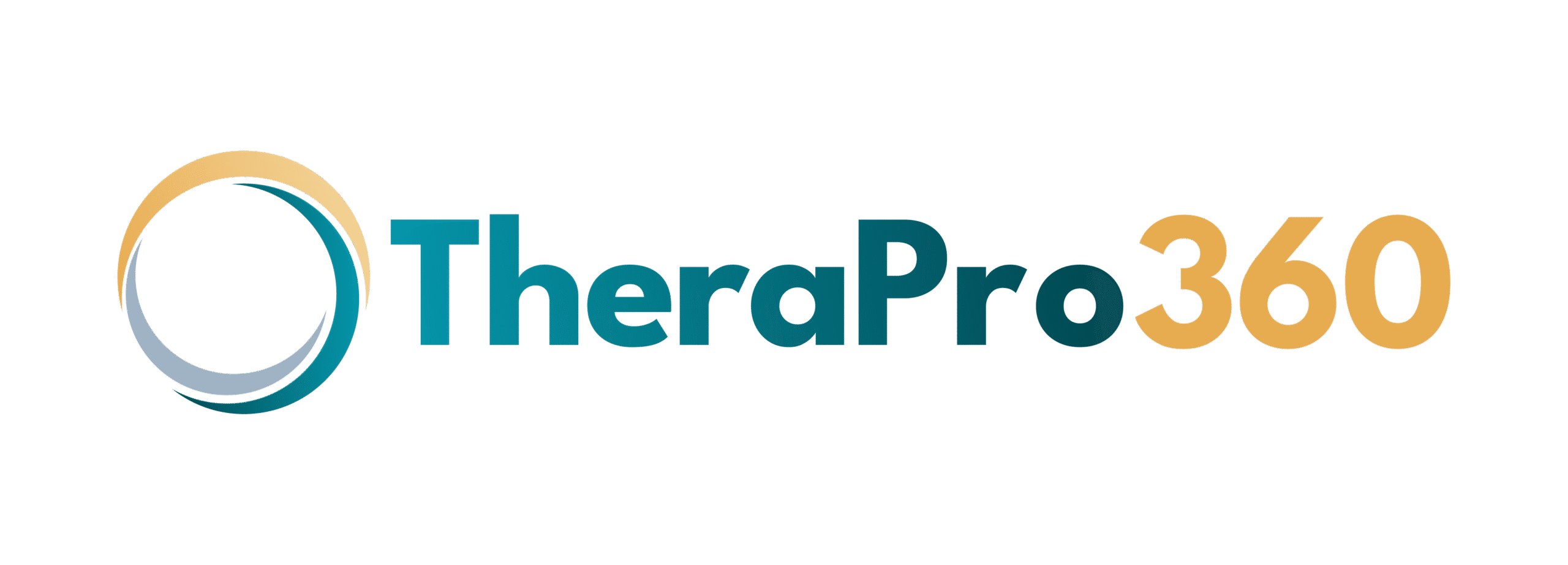
Blog
5 Ways to Improve Client Retention in Your Speech Therapy Practice
Expert web designers ensure the site and software is easy to use.5 Ways to Improve Client Retention in Your Speech Therapy Practice
Acquiring a new client is exciting, but retaining that client is what builds a truly successful and sustainable speech therapy practice. High client turnover, or “churn,” is more than just a scheduling headache; it’s a significant drain on your revenue, morale, and growth potential. While some client drop-off is natural, a high churn rate often points to underlying friction in the client experience—friction that is often preventable.
Many practices focus heavily on marketing to attract new clients, overlooking the immense value locked within their existing client base. The key to long-term success isn’t just filling your schedule; it’s keeping it full with loyal, engaged families who feel connected to your practice and see measurable value in your services. This requires a deliberate focus on communication, convenience, and consistency.
This guide outlines five actionable strategies to dramatically improve client retention in your speech therapy practice. We’ll explore how modern technology, specifically practice management software for speech therapists, provides the essential tools to build lasting relationships, keep clients motivated, and create a seamless experience that fosters loyalty and drives growth.
Why Client Retention Matters More Than Ever in Speech Therapy
In a competitive healthcare landscape, client retention is not just a metric; it’s a core business strategy. Focusing on keeping the clients you already have is one of the most powerful levers you can pull to improve profitability, stabilize your practice, and build a strong reputation.
The cost of losing clients versus retaining them
It is significantly more expensive to acquire a new client than to retain an existing one. Studies across industries show that acquisition can cost five times more than retention. Consider the resources involved in attracting a new family: marketing expenses (e.g., online ads, flyers), the administrative time spent on intake and initial assessments, and the clinical time required to build rapport and create a new treatment plan.
When an existing client leaves prematurely, you not only lose their future revenue, but you also have to spend time and money to replace them. A high retention rate means you can spend less on marketing and more on improving care for the clients who are already committed to your practice.
How patient loyalty impacts your bottom line
Loyal clients are the financial bedrock of your practice. They provide a predictable stream of revenue, which is essential for healthy cash flow and confident business planning. A client who stays with your practice for the full course of their recommended treatment plan generates significantly more lifetime value.
Furthermore, loyal clients become your best advocates. A satisfied family who feels connected to your practice is far more likely to leave positive online reviews and refer their friends, family, and physician contacts. This word-of-mouth marketing is incredibly powerful and costs you nothing, creating a virtuous cycle of growth fueled by your existing client base.
Why communication and consistency are the keys to long-term success
At its core, client retention is about the relationship. Families stick with practices where they feel seen, heard, and supported. This is built through consistent, transparent communication and a reliable, professional experience at every touchpoint. When communication is fragmented, scheduling is chaotic, or billing is confusing, it creates friction that erodes trust and causes clients to disengage. The practices that succeed in the long term are those that systematically remove this friction and make it easy for clients to stay connected and motivated.
1. Strengthen Communication With Clients and Families
Clear, consistent, and convenient communication is the single most important factor in building strong client relationships. When families feel informed and connected, they are more engaged in the therapy process and more likely to remain with your practice.
The importance of transparent, ongoing communication
Therapy doesn’t just happen in the 45-minute session. The dialogue that occurs between appointments—answering a parent’s question, sharing a resource, or providing a quick word of encouragement—is what transforms a transactional service into a supportive partnership. Transparent communication about progress, scheduling, and billing prevents misunderstandings and shows clients that you are a trusted partner in their care journey.
How patient portals and secure messaging enhance connection
Modern technology provides the tools to make this level of communication a reality without overwhelming your staff. A key feature of practice management software for speech therapists is the integrated patient portal with secure messaging.
- Patient Portals: This secure online hub gives clients 24/7 access to their information. They can view appointment schedules, see billing statements, and access shared documents on their own time. This transparency empowers them and reduces the number of routine phone calls to your office.
- Secure Messaging: HIPAA-compliant messaging allows for quick, convenient communication without the security risks of personal email or standard SMS. A parent can ask a quick question about a home exercise, or a therapist can share a helpful article, all within a secure, documented platform. This accessibility makes clients feel heard and supported.
Automating appointment reminders and updates to reduce friction
One of the biggest sources of friction is scheduling confusion. Automated appointment reminders sent via text and email are a simple but incredibly powerful tool for retention. They not only reduce no-shows but also demonstrate that your practice is organized and proactive. Clients appreciate the gentle nudge, which helps them manage their busy schedules and reinforces your practice’s professionalism.
Leveraging software tools to simplify therapist-client collaboration
Software can facilitate collaboration in numerous ways. A therapist can upload a home practice worksheet to the patient portal for a family to download. After a session, a therapist can send a secure message summarizing the one or two key things to work on that week. These small, consistent touchpoints, facilitated by technology, build a strong collaborative bond and keep therapy top-of-mind between sessions.
2. Track and Share Progress to Keep Clients Motivated
For therapy to be successful, clients and caregivers need to believe it’s working. When progress feels slow or invisible, motivation can wane, and families may begin to question the value of continuing. Making progress tangible and visible is a powerful retention strategy.
Using data and reports to show measurable improvement
Speech therapy involves collecting a vast amount of data during sessions. Modern practice management software for speech therapists includes EMR/EHR functionalities that allow you to track this data in a structured way. Instead of just writing subjective notes, you can log quantitative data for each goal (e.g., “produced /s/ in the initial position of words with 80% accuracy in 8 out of 10 trials”). This data is the raw material for demonstrating progress.
How visual progress charts increase patient engagement
The software can then take this data and turn it into simple, easy-to-understand visual charts and graphs. A line graph showing a child’s accuracy on a specific sound improving over several weeks is a powerful visual tool. It transforms abstract clinical data into concrete evidence of progress. Sharing these charts with parents and even older clients can be incredibly motivating, as it provides clear proof that their hard work is paying off.
Sharing session summaries through online portals
While full clinical notes can be dense and technical, many software platforms allow you to create or share simplified session summaries through the patient portal. A brief, parent-friendly summary that highlights a key success from the session and notes the main goal for the upcoming week keeps families locked in and focused. This simple act of sharing shows transparency and reinforces the value of each and every session.
Encouraging accountability between sessions with digital tracking tools
Some platforms offer tools for clients to track their own home practice. This could be a simple digital checklist or a log within the patient portal where they can note their practice efforts. This not only encourages accountability but also provides the therapist with valuable information about what’s happening outside the clinic walls, allowing them to tailor their approach and provide more targeted support.
3. Offer Convenient Scheduling and Payment Options
Life is busy, and logistical hurdles are a common reason why clients drop out of therapy. Making it as easy as possible for clients to schedule appointments and pay their bills is a critical, though often overlooked, aspect of client retention.
How flexibility reduces cancellations and drop-offs
When a client has to call during specific office hours, wait on hold, and play phone tag to schedule or change an appointment, it creates a barrier. If the process is too difficult, they may simply give up, leading to a no-show or a decision not to reschedule. Providing flexible, self-service options respects your clients’ time and removes this logistical friction.
Empowering clients with self-scheduling and rescheduling tools
A patient portal with integrated scheduling tools empowers clients. They can:
- View Availability 24/7: A parent can look at your clinic’s real-time availability at 10 PM after the kids are in bed.
- Request Appointments Online: They can request a time that works for them without having to make a phone call.
- Manage Their Own Schedule: They can see all their family’s upcoming appointments in one place and, if your policy allows, request to reschedule a session online.
This convenience and control make clients feel valued and make it easier for them to fit therapy into their lives.
Secure online payments and easy billing visibility
Billing is a frequent source of stress and confusion for clients. A difficult payment process can sour an otherwise positive therapeutic relationship. An integrated patient portal can solve this by providing:
- Billing Transparency: Clients can view their statements, see detailed explanations of benefits (EOBs) from their insurance, and understand exactly what they owe.
- Online Payments: Offering secure online credit card payments makes it incredibly easy for clients to settle their balances instantly. This improves your cash flow and provides a much better experience for clients than mailing a check.
Integrating scheduling, invoicing, and communication into one system
The magic happens when these tools are part of a single, integrated practice management software for speech therapists. The client can receive an automated appointment reminder via text, log in to the portal to confirm, see a new bill that was automatically generated from that session, and pay it online—all within one seamless, professional platform. This frictionless experience is what sets modern, high-retention practices apart.
4. Personalize the Client Experience Through Data Insights
A one-size-fits-all approach to client engagement is rarely effective. Every client is unique, with different communication preferences, scheduling needs, and motivation levels. Using data from your practice management software allows you to personalize your approach and proactively address potential issues.
Using practice management software to analyze client patterns
Your software is a treasure trove of data. By running simple reports, you can identify patterns that might signal a client is at risk of dropping out. For example, you can track:
- Attendance History: Is a client starting to cancel or no-show more frequently?
- Payment Patterns: Are their invoices consistently overdue?
- Portal Engagement: Have they stopped logging in or responding to messages?
- Progress Plateaus: Has their data shown a lack of progress on key goals for several weeks?
Identifying at-risk clients before they disengage
These data points are early warning signs. A report that flags clients with two or more last-minute cancellations in a month allows you to be proactive. Instead of waiting for them to drop out, the therapist or office manager can reach out personally. A simple, empathetic phone call to ask if their current appointment time is still working for them can often resolve the issue and prevent them from leaving.
Customizing follow-ups, goals, and reminders based on data
Data allows for smart personalization. If you know a family prefers text messages, you can make that their default reminder setting. If a client is struggling with a particular goal, the therapist can send a secure message with a targeted resource or video link. This tailored support shows clients that you are paying attention to their individual needs, which builds immense loyalty.
Building stronger relationships through individualized care plans
Ultimately, this data-driven personalization helps you create a more effective and individualized care experience. It allows you to move beyond just treating the diagnosis and start treating the whole person, taking their life circumstances and preferences into account. This deeper level of care is the foundation of a strong, long-lasting therapeutic relationship.
5. Create a Seamless, Digital Client Experience
The overall impression your practice makes is the sum of all its parts. A modern, high-retention practice provides a consistent, professional, and seamless digital experience at every touchpoint.
Centralizing all interactions within one secure platform
When a client has to use one website to schedule, another app to do teletherapy, and a third portal to pay bills, the experience is fragmented and confusing. A unified practice management software for speech therapists brings all these interactions into one place. The client has one login to access everything—scheduling, messaging, teletherapy links, progress reports, and billing. This simplicity and centralization create a superior client experience.
Providing a consistent, professional digital presence
Every automated reminder, every page of your patient portal, and every email your system sends should reflect your practice’s brand and professionalism. This consistency builds trust and reinforces the image of your practice as a modern, organized, and high-quality provider.
Using teletherapy integrations for continuity of care
The ability to offer teletherapy is now a key part of modern practice. An integrated system makes this seamless. You can schedule a teletherapy session in the calendar, and the system automatically sends a secure video link to the client. This allows you to provide continuity of care if a client is sick, on vacation, or has transportation issues, preventing a missed session and a break in clinical progress.
Improving overall satisfaction with modern, convenient tools
Ultimately, all these digital tools work together to create an experience that is easy and convenient for the client. By removing administrative and logistical friction, you allow them to focus their energy on what really matters: their therapy. This focus on convenience and user experience is a powerful driver of overall client satisfaction and loyalty.
How Practice Management Software Supports Client Retention
A fully integrated practice management software for speech therapists is the engine that drives all five of these retention strategies. It provides the infrastructure needed to execute them consistently and at scale.
Combining communication, scheduling, and progress tracking in one platform
The software breaks down the silos between different aspects of your practice. It creates a single, unified system where communication, scheduling, and clinical progress are all interconnected, providing a holistic view of the client and enabling a coordinated engagement strategy.
Reducing administrative barriers that frustrate clients
By automating reminders, offering self-service options, and simplifying payments, the software systematically removes the administrative hurdles that cause client frustration. A smoother, more efficient back-office operation leads directly to a better front-office client experience.
Enhancing engagement with automation and accessibility
Automation ensures that key engagement touchpoints—like reminders and progress updates—happen consistently for every client, without relying on a staff member’s memory. The 24/7 accessibility of the patient portal means clients can engage with your practice on their own terms, leading to a deeper sense of connection and control.
Strengthening therapist-client relationships through consistency and transparency
The software provides the tools for therapists to build stronger relationships. It facilitates consistent communication, provides transparent access to information, and frees up therapists’ time from administrative tasks so they can focus on the clinical and interpersonal aspects of care.
Measuring the ROI of Client Retention Tools
Investing in software to improve retention has a clear and compelling return on investment (ROI). You can measure this return through several key metrics.
Calculating lifetime client value (LCV)
Lifetime Client Value (LCV) is a crucial metric that estimates the total revenue you can expect from a single client over the course of their relationship with your practice. A simplified formula is:
LCV = (Average Revenue per Visit) x (Number of Visits per Month) x (Average Number of Months in Treatment)
By increasing the average length of treatment through better retention, you directly increase the LCV of every client you see.
Tracking retention metrics and churn rates
Your software should allow you to track these key metrics:
- Client Retention Rate: The percentage of clients who remain with your practice over a specific period.
- Client Churn Rate: The percentage of clients who leave your practice over a specific period. (Churn Rate = 100% – Retention Rate).
Setting a goal to reduce your churn rate from 20% to 10%, for example, provides a clear target for measuring the success of your retention efforts.
Comparing manual versus automated engagement outcomes
Before implementing new software, benchmark your current state. What is your no-show rate with manual reminders? What is your churn rate? After implementation, track these same metrics. The difference in the numbers will provide a stark comparison of the effectiveness of automated engagement versus manual efforts.
How increased retention translates to practice growth
Higher retention means more stable revenue and a lower need for costly marketing campaigns. This frees up capital and time that you can reinvest into growing your practice—whether that’s hiring a new therapist, opening a new location, or adding a new service line.
Implementation Tips for Better Client Retention
Successfully rolling out new digital tools requires a thoughtful approach to change management.
How to introduce digital tools without overwhelming clients
- Start Small: Begin by rolling out one key feature, like automated reminders, before introducing the full patient portal.
- Highlight the Benefits: Frame the new tools in terms of how they will make the client’s life easier (e.g., “Now you can schedule appointments anytime, day or night!”).
- Provide Clear Instructions: Create simple, one-page guides or short tutorial videos to walk clients through the registration and login process.
Training your staff for consistent communication and follow-up
Your staff are your ambassadors for these new tools. Ensure they are fully trained and can confidently answer client questions. Set clear protocols for how and when to use secure messaging and how to interpret the data from retention reports.
Setting up automation workflows for reminders and progress updates
Work with your software vendor to customize your automation. Define the timing and content of your appointment reminders. Set up templates for sharing session summaries. Getting these workflows right from the start is key to consistent execution.
Collecting feedback and iterating on your engagement strategy
Once your tools are live, ask for feedback. Use simple surveys to ask clients about their experience with the patient portal. Use this feedback to make improvements. Your client engagement strategy should be a living process that you continually refine based on data and client input.
Conclusion: Retain More Clients With the Right Tools
Client retention is the key to building a resilient, profitable, and impactful speech therapy practice. By focusing on creating a supportive, convenient, and transparent client experience, you can foster the loyalty that turns first-time visitors into long-term advocates for your practice.
Recap of the five client retention strategies
- Strengthen Communication: Use portals and secure messaging to stay connected.
- Share Progress: Use data and visuals to keep clients motivated.
- Offer Convenience: Simplify scheduling and payments with self-service tools.
- Personalize the Experience: Use data to identify and support at-risk clients.
- Create a Seamless Digital Experience: Unify all interactions on one platform.
Why practice management software is key to consistent engagement
Executing these strategies consistently across your entire client base is nearly impossible with manual methods. Practice management software for speech therapists provides the automated, integrated, and scalable platform you need to make exceptional client engagement the standard for your practice. It’s the tool that turns good intentions into a reliable system.
Next steps — adopting the right software to improve loyalty and satisfaction
- Calculate Your Churn: Determine your current client churn rate and its financial impact on your practice.
- Identify Your Friction Points: Where in your client journey do you lose people? Is it scheduling, billing, or a lack of perceived progress?
- Demo Integrated Platforms: Research software solutions that directly address your friction points with features like patient portals, progress tracking, and online scheduling.
- Invest in Your Relationships: Choose a software partner that will help you build a more connected, convenient, and engaging practice.
This investment in technology is an investment in your client relationships—and that is the surest path to long-term success.
FAQs About Client Retention and Practice Management Software
How does practice management software improve client communication?
It provides a centralized, secure platform for all communication. Features like patient portals allow clients to self-serve for routine needs, while HIPAA-compliant secure messaging enables quick, convenient conversations with their therapist. Automated reminders and updates ensure clients are always informed, reducing confusion and building trust.
What features help track speech therapy progress effectively?
Look for an EMR/EHR within the software that allows for discrete data collection (tracking percentages, trial counts, etc.) for specific goals. The best systems can then automatically turn this data into visual graphs and charts, making progress easy for clients and caregivers to see and understand.
Can automation really improve client retention rates?
Absolutely. Automation improves retention by ensuring consistency. It guarantees that every client gets an appointment reminder, has easy access to their information, and receives regular updates. This consistent, professional experience removes the administrative friction that often causes clients to disengage and drop out of therapy.
Is patient data safe when using digital communication tools?
Yes, provided you are using a platform designed for healthcare. Reputable practice management software for speech therapists is built to be HIPAA-compliant. They use security measures like end-to-end encryption, secure servers, and access controls to protect patient data. Always ensure your software vendor will sign a Business Associate Agreement (BAA), which legally binds them to protect your data according to HIPAA standards.
Why TheraPro360?
Run your practice with simplicity with our streamlined scheduling, seamless telehealth integration, centralized patient portals, intuitive calendar management, and automated invoicing.
Get Started Today















